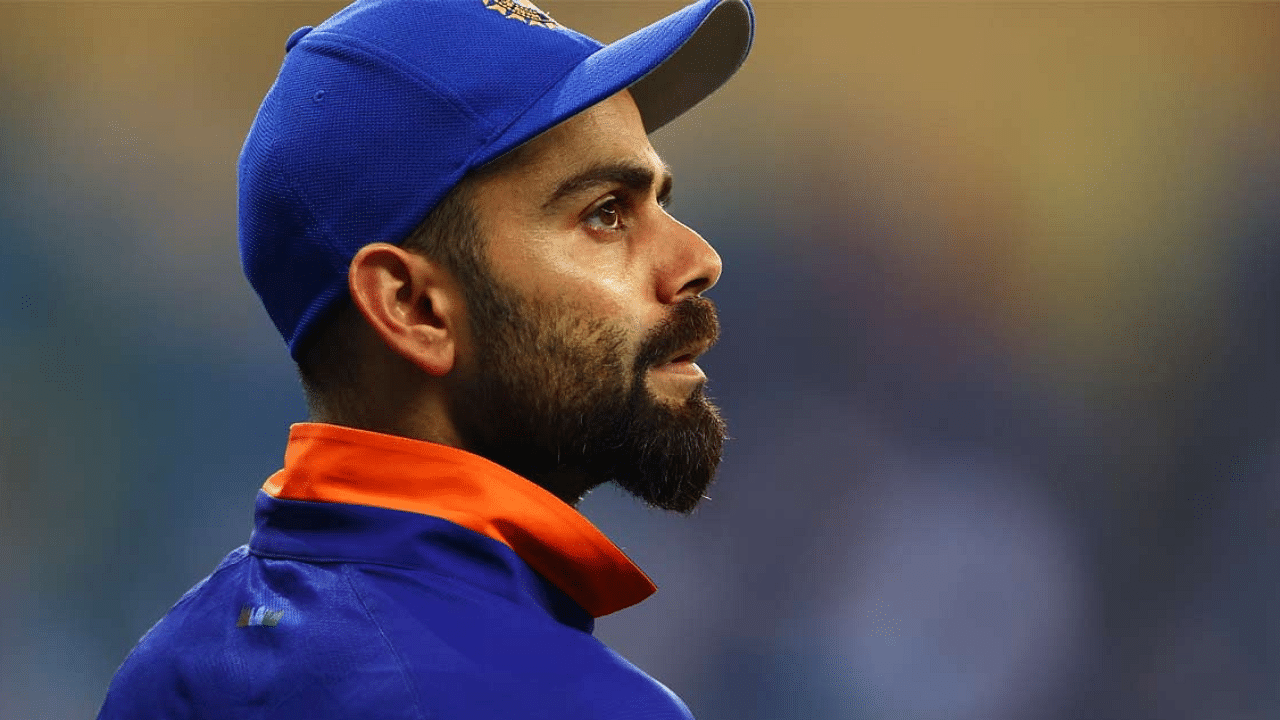
There was a time when rival teams riled up Virat Kohli at their own peril. Nothing drove the right-hander to stack up runs more than a slight, even if perceived, from the opposition. Over a period of time, teams learned the hard way to let him be, for the slightest provocation would further cement his determination to succeed. That’s not to suggest that Kohli was/is a saint. He often looked for a scrap and instigated opponents to in turn to provoke him. In the process, he occasionally appeared repulsive and his actions unbearably cringeworthy. But then, you could ignore those histrionics because he backed up the talk with tons of runs. No cricketer of his generation has polarised opinion like Virat Kohli has - he was feared, respected, loved and hated all at the same time. For the last year or so, he has been attracting sympathy too as big scores have deserted him.
Just last September, Kohli, the captain in all formats, and his team had left the English shores with the Test series seemingly in their control having taken a 2-1 lead. Between then and his return to England now, circumstances have changed dramatically. He is no longer the captain, nor is he the batsman bowlers once feared. The halo is gone, the aura is lost and questions about his place in the team are being openly raised by former cricketers of eminence.
"If world No. 2 bowler Ashwin can be dropped from Test side, then (a former) world No. 1 batter (Virat Kohli) can also be dropped (from T20Is)," Kapil Dev told a TV channel on Friday, joining the chorus on Kohli's future in the shortest format.
In a way, it’s ironic that his place should be questioned in a format in which he has had the most success internationally during the period when his performances have come under scrutiny. It's been drilled into the majority of Indian cricket followers that Kohli's last century in international cricket came in November 2019 against Bangladesh in the inaugural day/night Test in India at the Eden Gardens. Since then, both his average and strike rate have spiralled downwards in Tests and ODIs. While from the D/N Test onwards, he has scored at an average of 30.54 runs per innings with a strike rate of 45.08 in the longer format; the corresponding numbers in ODIs are 37.66 and 88.87 respectively.
To put that in perspective, his career average in Tests, despite plummeting steeply in the last 30 months, is 49.53 (SR: 55.68) and 58.07 (SR: 92.92) in ODIs. On the contrary, for almost the same period, his T20I average is 56.40 with a strike rate of 145.11 as compared to his career T20I average of 51.50 and strike rate of 137.67. So, why then all the hullabaloo around Kohli's spot in T20Is?
That's because modern-day cricket is judged as a package and not in isolation. Just as how good performances in one format strengthen your claims in another format (for example, Jasprit Bumrah, who graduated to Test cricket following his impressive outings in white-ball cricket), failure in one or two formats could well have a bearing on the third. Kohli's record in Tests and ODIs, as mentioned above, is hardly eye-catching but it's his diminishing returns in the 15th edition of the Indian Premier League that have added meat to the argument. The IPL is not quite international cricket in terms of nomenclature, but if a player can be picked owing to his performances in the most competitive T20 league in the world, why not drop someone who fails to measure up to the competition?
It's a fair argument not just because Kohli is struggling but also due to the fact that the replacements have been performing exceedingly well. How long do you keep the performers out and give preference to past reputation when head coach Rahul Dravid has not much time left to finalise his squad for the T20 World Cup in Australia in October-November? Also, does Kohli fit into the present Indian team's T20 philosophy that is more "Bazballesque" than his tried and tested "bide-time-and-explode-later" approach. If the first game of the T20I series against England in Southampton is anything to go by, this team has no time or place for batsmen who can't blast off from ball one. Even Rohit Sharma, who normally spends some time before accelerating, cut loose from the first over, making abundantly clear the path this team is going to traverse as it eyes an elusive second T20 World Cup.
Rarely has Kohli played his T20 cricket in this fashion. Even when he enjoyed his best IPL seasons, he made up for a low strike-rate after getting set. His 341 runs this IPL, which came at a poor average of 22.73 and an even more unacceptable strike rate of 115.98, inspire little confidence. While a franchise can remain patient with a player who is still a brand in himself, a national team can't afford to stick to non-performing assets for far too long.
In this light, it becomes imperative for Kohli to not just deliver but deliver in the manner the team wants. And his audition, harsh as it may sound, may have begun with the second T20I, in which he fell for a three-ball 1 after replacing an in-from Deepak Hooda, against England in Birmingham. He has another match in England, and if the selectors grant him the rest he has asked for from the five-match T20 series in West Indies, he will be left with only the Asia Cup (T20 format), likely to be held in Sri Lanka in August-September, to prove his credentials. Kohli is racing against time, and it remains to be seen if he aces the challenge, though why he would want a break at this stage with the proverbial sword hanging over his head is hard to fathom.